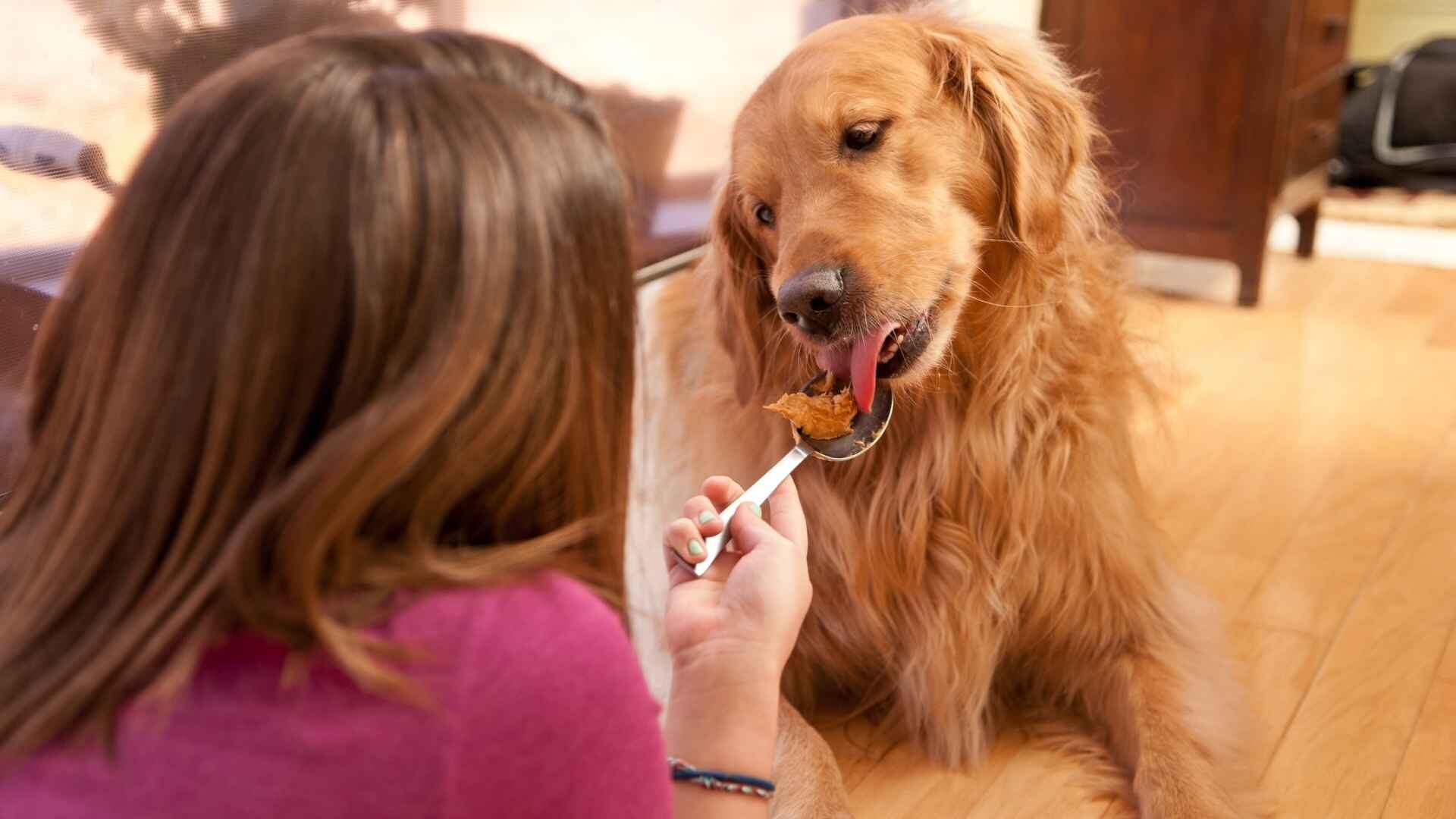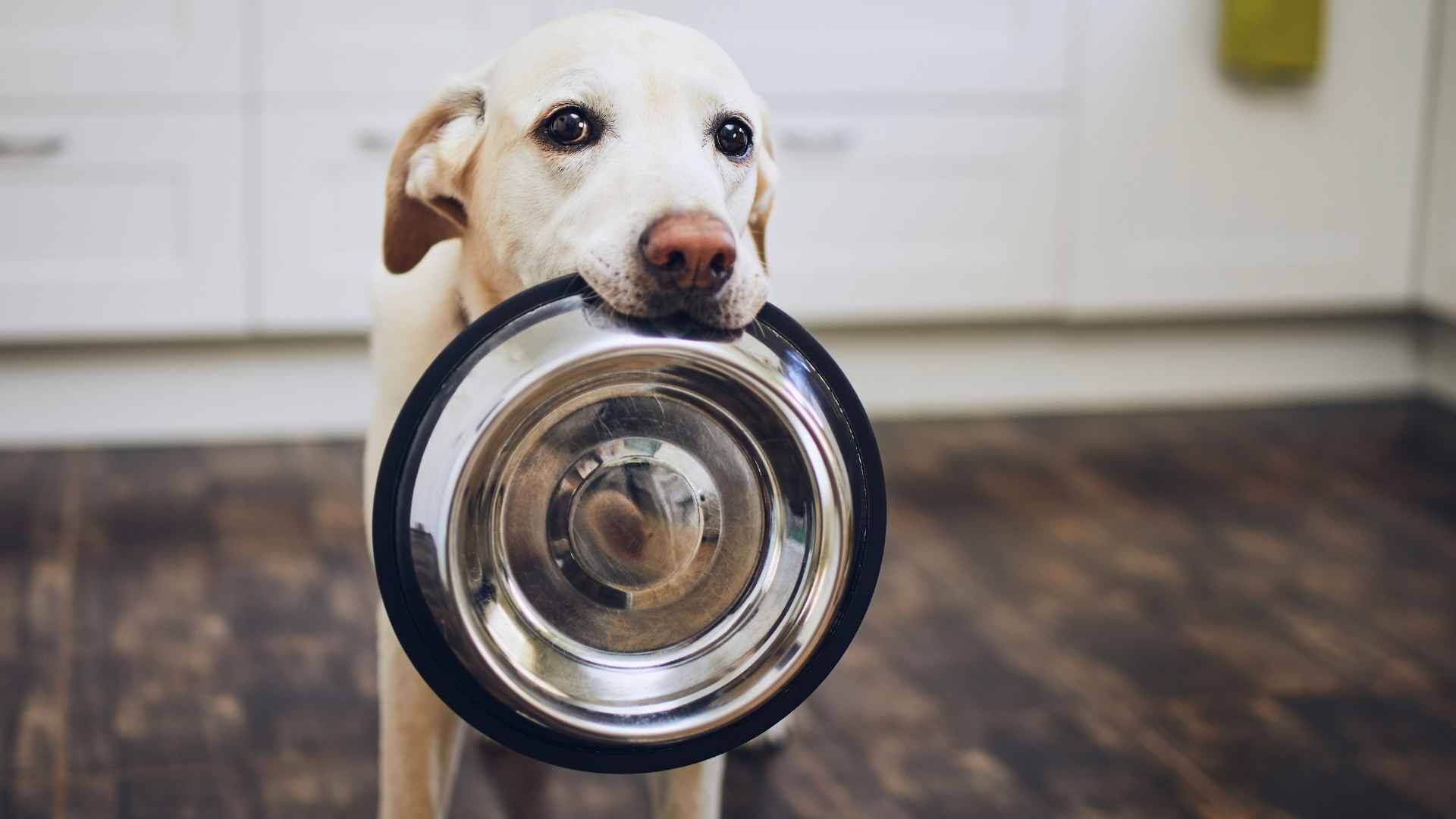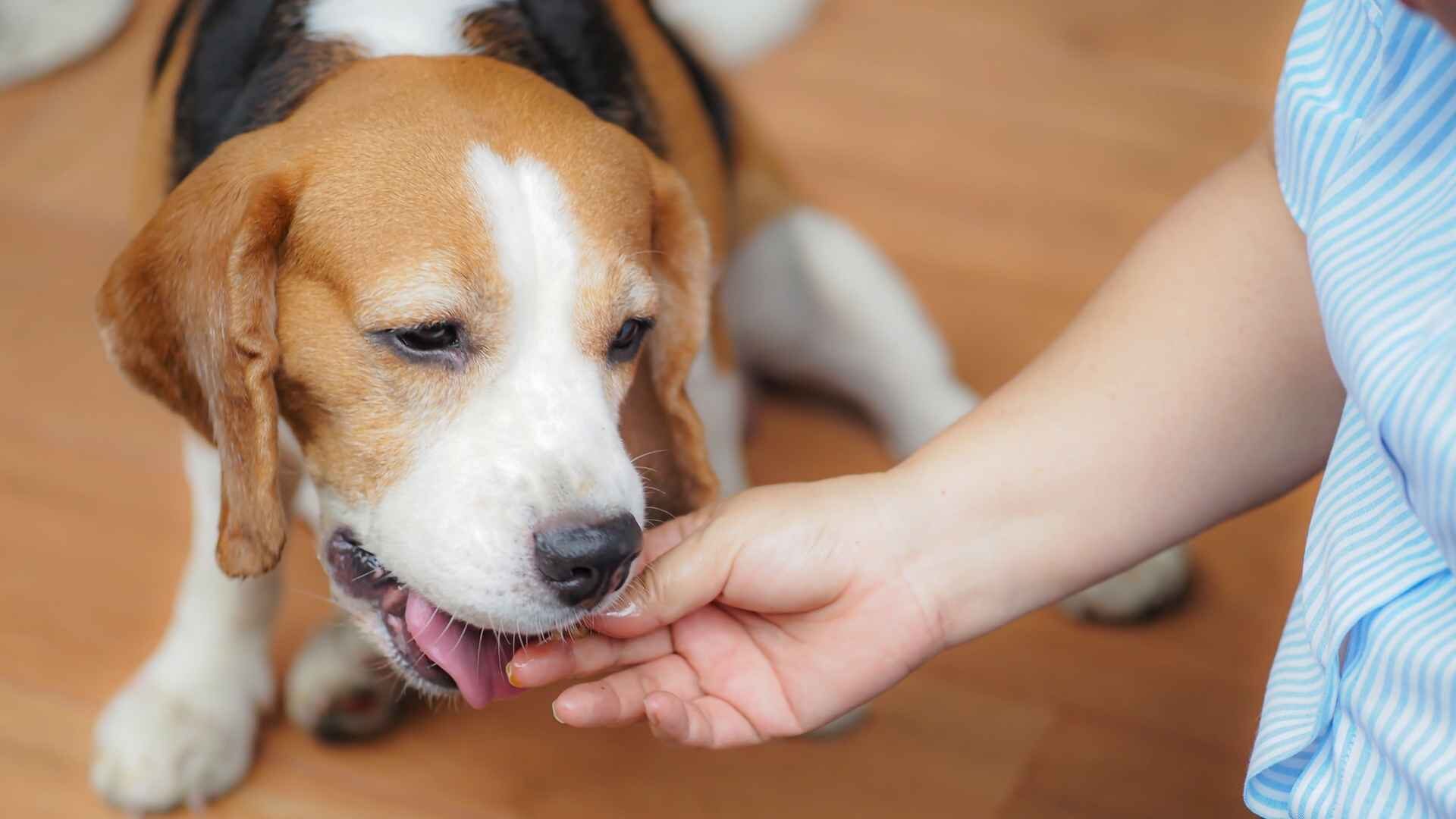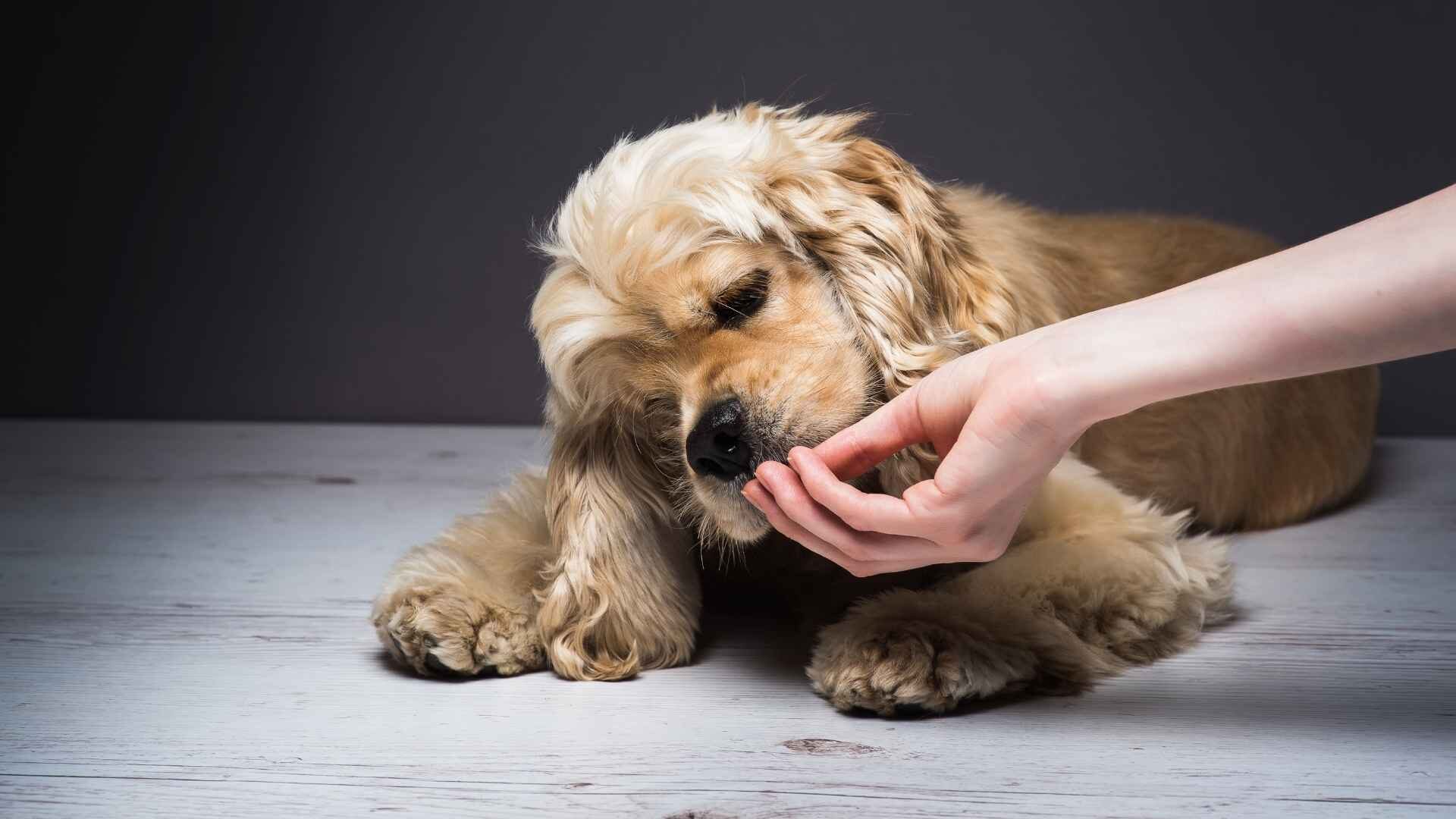A medical emergency has been ruled out, and it’s time to feed the dog. How about your dog’s physical condition? In the event that your dog has experienced diarrhea before, or if this is the first time it has happened, the following advice should be followed: Your dog’s digestive system (GI) needs some downtime.
If you have digestive issues, you may find that going without meals for a while helps your body recover. So, how long should you wait before eating again after having diarrhea? The source of the diarrhea, the dog’s age and size, and any drugs being given all play a role in determining the best course of action.
If your dog is an adult and in good health, you may try fasting it for around 12 hours. With that in mind, if your otherwise healthy adult dog has a single episode of diarrhea in the morning, you should delay food for the day and feed it just a little quantity of bland food at night. …(More on it later.)
Avoid feeding your dog after 8 p.m. if he or she has diarrhea, and provide just a tiny, bland meal in the morning. If your dog can drink water without vomiting or having additional diarrhea, then you should give it to him.
When to feed a dog with diarrhea?

When a dog starts having diarrhea, its owner quickly learns how crucial it is to know what to feed a dog with diarrhea. A dog’s gastrointestinal tract is responsible for digesting the food it eats. Therefore any discomfort it has as a result of this process may be rather terrible.
Constipation, scooting, unusual bowel movements, bloating, gas, vomiting, and liquid feces are all examples of gastrointestinal symptoms. When a dog starts having trouble defecating or urination and bowel movements become more irregular, it’s an indication that something is wrong.
A dog’s food may alter both the frequency and appearance of its feces. However, it’s not typical to have a lot of loose, smelly, or off-colored feces. Typically, a dog will defecate once or twice a day. When dog owners observe a change in the consistency or color of their dog’s feces, it’s a red flag.
Many different things may trigger diarrhea in canines. Try home feeding solutions that may help dog diarrhea if your dog has loose feces but is otherwise healthy. It is reasonable to take a dog to the vet if diarrhea persists and there are additional worrying signs.
What to feed a dog with diarrhea?
It’s difficult to give a sick dog food. Both you and your dog will feel stressed out when caring for an ailing pet due to the dog’s lack of appetite, nausea, stomach pain, diarrhea, and vomiting. In addition to providing your dog with the nutrients he needs for recovery, a bland diet may help alleviate some of these symptoms.
These five recipes are meant to soothe your dog’s stomach when they’re experiencing moderate symptoms like gas, nausea, constipation, or diarrhea. Always see your vet first since these symptoms might sometimes indicate a more severe illness.
Remember that dogs with preexisting health concerns, including diabetes, cancer, allergies, and elderly dogs, could require more nutrients to keep healthy; use these recipes only after you have ruled out potential health hazards and reviewed your strategy with your veterinarian.
1. Served with rice and chicken
Common dog food components like chicken and rice are easy for sensitive dog tummies. This tasteless dish is also quite simple to cook. Boneless, skinless chicken breasts and rice are all that is needed. While white rice lacks the nutritious content of brown rice, its mild flavor makes it an excellent choice for those with sensitive stomachs.
Avoid adding any additional flavors or oils to your dog’s food; this includes rice and chicken. In order to prevent your dog from choking on this surprise treat, make sure the chicken is cooked completely and sliced or shredded into tiny, bite-sized pieces. If you’d rather not cook, you may find plenty of chicken and rice dishes in stores.
2. Chopped up chicken
A dog’s appetite may be greatly stimulated by shredded chicken, and it’s also easy on an upset stomach. Chicken that has been cooked and shredded without any seasoning is a fantastic snack for sick dogs since it is simple to digest and full of healthy nutrients, including vitamins, minerals, lipids, and amino acids.
Chicken may be stored in the fridge for up to four days or frozen for two to six months. Shredded chicken is sold in packages and may be ordered on the internet.
3. Pumpkin
Similar advantages to digestion health are shared by pumpkin and sweet potato. As with sweet potatoes, the high fiber content of pumpkin aids in the digestion of canines. Pumpkin provides your dog with a nutritional boost and aids in digestion because it is rich in vitamin E, thiamin, niacin, vitamin B6, folate, iron, magnesium, phosphorous, dietary fiber, vitamin A, vitamin C, riboflavin, potassium, copper, and manganese when cooked, peeled, unsalted, and unseasoned.
If your dog suffers from minor constipation, you may find that feeding it pumpkin can help. Depending on the size of your dog, the vet may prescribe giving it one to four teaspoons of pumpkin. The canned kind, if unsalted, may be used in place of fresh pumpkin in many recipes. However, the spices and sugars in pumpkin pie filling may upset your dog’s stomach and lead to more medical concerns, which might mean another trip to the doctor. As an additional option, you may supplement your dog’s diet with one of the several pumpkin powders available on the market.
4. Bone Broth
Bone broth is an extremely gentle liquid meal that settles well in tummy troubles in dogs. Additionally, it’s a healthy and tasty method to entice picky eaters or dogs with diminished appetites to finish their meals by adding moisture and taste to dry food. Beef marrow bones or other bones with plenty of joints, such as turkey or chicken legs, are perfect for making a bone broth for dogs.
Put the bones in a pot with enough water to cover them by two to three inches, put the lid on top, and simmer on low for twenty-four hours. Two to three hours in the refrigerator should be enough time for the fat to solidify to the top of the soup. Take out a serving, then refrigerate the broth until it sets into a jelly. Add some moisture to your dry meal by microwaving the broth until it turns from a jelly-like consistency to a liquid.
On the other hand, don’t let it simmer for too long, or the broth may get too hot and burn your dog’s lips. Broth may be frozen in ice cube trays for later use. While the marrow in bone soup is nutritious, dogs should never eat cooked bones.
Before serving, skim the soup to get rid of any remaining bones. If you want to avoid a trip to the emergency department, filter the soup to remove any tiny bones that could have been missed. Bone broth that is suitable for dogs may be purchased online for your convenience.
5. Formula and other Baby Food
Animal hospitals that provide emergency treatment for animals often give the canines under their care baby food. Baby food is a fantastic vehicle for administering orally administered drugs because of how easy it is ingested and metabolized. Meat-based infant meals, such as chicken, lamb, and turkey, are OK for Stage II, as long as they don’t include garlic or onion powder, as recommended by veterinarians.
You might also try an OTC medicine for diarrhea and stomach problems. No home remedy should ever take the place of professional medical treatment, but a bland diet may help ease your dog’s digestive pain and provide him tasty treats at the same time. You may save some of these five recipes for dog digestive health for when your dog is feeling better as a tasty reward.
What causes dog’s diarrhea?
We’ve all done it: given our dogs a bite or two from our meal or sprinkled some human food on top of their kibble. I know that cute little face begging for more is enticing, but please resist the urge. The digestive systems of our dogs are vastly different from our own.
Large quantities of fat, or even just levels of fat that are above the usual for a dog or cat, might be difficult for them to digest. By drawing water into the digestive system as it is digested, treats heavy in salt and sugar may cause diarrhea. Carrots, green beans, and apples are all good options for pet-friendly “human food” (without seeds).
1. Diarrhea caused by dog breeds
Dogs may have either large- or small-bowel diarrhea, and these distinctions help us limit potential reasons. Large-Bowel Diarrhea. Large-bowel diarrhea, or diarrhea emanating from the large intestine or colon, is characterized by: Enhanced occurrences. Colonies of little feces, straining during defecation.
When dog owners see blood in their pup’s poop, they often get alarmed. While this is obviously a symptom of inflammation and a good time to get to the vet, a tiny bit of blood is generally run for the course when dealing with large-bowel diarrhea. Here’s why. In general, the colon has a dual purpose: Put the stool away until it’s time to go.
Restoration of normal water levels through reabsorption; avoidance of thirst. Blood vessels in the colon are near to the surface because they need to extract water from stool, making them vulnerable to damage from inflammation and strain. Similar to how the stomach has mucous glands to assist keep bowel movements smooth, the colon has mucous glands to help keep feces moist and easy to pass.
Inflammation causes an increase in mucus production. Watery stools are another symptom of a malfunctioning colon. When there is a lot of blood in the stools (when the stool is red or looks like raspberry jam), it’s more urgent that something is done about it.
2. Toxic sprue syndrome
Diarrhea that originates in the small intestine, or small-bowel diarrhea, is characterized by: large, goopy stools passed at regular intervals. The stool is generally greasy and frothy. The presence of blood or mucus in the feces is uncommon. There is often no straining involved. The tiny intestine’s function is to absorb nutrients into the body. The absence of absorption may occur due to inflammation or malfunction, causing greasy stools.
3. Canine acute diarrhea
Dogs may sometimes be cured of their diarrhea bouts with little effort. Diarrhea that suddenly occurs typically goes away without any treatment on your part. If your dog has had diarrhea for more than 48 hours, if there is blood in the stool, or if your pet is showing any other symptoms (vomiting or loss of appetite), you should take him to the doctor.
4. When dogs have persistent diarrhea, it’s called chronic diarrhea
Diarrhea that doesn’t go away after therapy or comes back often is chronic.
- Insect parasites, like whipworms
- Disorders of the gastrointestinal tract characterized by inflammation
- Caused by a lack of exocrine pancreatic function
- Thyroid disease, or maybe another metabolic disorder
- Cancer
- Dysbiosis
When left untreated, chronic diarrhea in dogs may cause them to lose weight, have a dull coat, and become lethargic. Chronic intermittent diarrhea may also be brought on by feeding your pet food to which it is allergic. While many pet meals have improved nutritional profiles, some of the healthier options for your dog or cat may still be rich in fat and protein.
When dogs are put on grain-free diets, they don’t get the beneficial fiber that normally would be included in their food, which may be quite taxing on a delicate digestive system. It’s crucial to choose a well-rounded diet from a manufacturer that carefully considers the ingredients it uses in each of its products.
5. Dog diarrhea and nausea
Whenever diarrhea in dogs is accompanied by vomiting, it signals the involvement of a hitherto unmentioned part of the digestive system. Stomach and upper GI irritation are together referred to as gastroenteritis. Sometimes, even a little serving of a high-fat treat might set off pancreatitis, an inflammation of the pancreas that generates digesting enzymes and other helpful substances.
Extreme nausea, vomiting, and diarrhea may accompany this disease. Pancreatitis is a serious condition that may be deadly if not treated quickly. Blood in the vomit may make it seem red, brown, or black. Blood in the vomit, unlike modest amounts of blood in the feces, is cause for immediate veterinary attention.
Is my dog’s diarrhea an emergency?

Unexpected diarrhea in your dog is concerning since it is always concerning when our canine pals plainly aren’t feeling well. Our Palmdale veterinarians discuss the most frequent causes of diarrhea, what to do if your dog has bloody stools, and when to seek emergency care. The veterinarians at All Care Pet Clinic in Palmdale see their share of canine cases of diarrhea.
Mild episodes of diarrhea are frequent in dogs and may be the result of a number of different health issues. Whether it’s an unfavorable response to a new dog food brand or a tiny quantity of table scraps that your dog shouldn’t have eaten, food is often the root cause of gastrointestinal discomfort in canines. However, there are a number of other, more dangerous causes of your dog’s diarrhea, and in certain cases, you’ll need to rush him to the doctor.
What to do when a dog has diarrhea?
When a dog gets diarrhea, it’s one of the most alarming (and sometimes nasty) signs for pet owners. When your dog gets diarrhea, you need a solution fast, and our doctors in Baltimore know that. Find out what might cause your dog to have diarrhea and what you can do to help fix the problem.
One case of diarrhea in an otherwise healthy dog probably isn’t a reason for alarm. You may tell whether your dog is feeling better on his or her own by monitoring his or her bowel motions. If your dog has had diarrhea on more than two separate occasions, you should take him to the doctor to rule out any underlying health issues.
If your dog is straining to defecate but only producing a tiny quantity of watery diarrhea, he or she may be suffering from a severe blockage caused by the ingestion of a foreign item, such as a toy. An immediate visit to a veterinarian is required for this situation. Get in touch with your local animal hospital’s emergency room or call your vet immediately.
In dogs who are extremely young, very elderly, or have impaired immune systems, many episodes of diarrhea in a short period of time may indicate a major health problem. Diseases like parvovirus are highly infectious and sometimes fatal. If your dog has diarrhea on a regular basis, you should schedule an appointment with a veterinarian straight soon.
If your dog has had just a few loose or watery stools, you may help him, or her feel better by putting him or her on a fast for 12 to 24 hours.
If your dog’s problem persists after a 24- to 48-hour period of eating a bland diet, see your veterinarian. You may try giving your dog some plain white rice with a little chicken and some canned plain pumpkin (not pumpkin pie filling) to see if that helps settle his stomach. Once your dog has recovered from their illness, you may feed them its usual diet.
Natural yogurt, probiotics, peeled boiled potatoes, cottage cheese, egg with no oil added, specially developed dog diets, and drugs given by your doctor may also help to calm your dog’s upset stomach.
Whenever you have concerns about your dog’s health, it’s better to be safe than sorry. The best way to treat your dog’s diarrhea is to have your veterinarian investigate the problem and find the underlying reason.
Please keep in mind that the material presented here is for educational reasons only and is not meant to replace professional veterinary care. Please schedule an appointment with your veterinarian for a thorough examination of your pet.
What foods to avoid for dog with diarrhea?

Dogs with stomach problems or diarrhea need extra attention and care. What follows are some strategies for calming their stomach and easing their discomfort. Every dog eventually suffers from vomiting and diarrhea.
This problem’s frequency, severity, and other factors all depend on your dog’s nutrition, age, and temperament. Diarrhea and stomach distress in dogs are often acute, meaning they develop suddenly in reaction to a specific food or food additive. Digestive problems that persist over time may be a sign of something more severe.
Regular vomiting or diarrhea in a dog should prompt an early trip to the doctor to rule out a chronic condition. Here are 12 meals that may help your dog feel better quickly by soothing an upset stomach, increasing hydration, or both.
1. Put your dog on a leash and run
The American Kennel Club (AKC) suggests waiting 12 to 14 hours between feedings while still giving your dog enough fresh water to drink. Dehydration might be alleviated by drinking water. Keep in mind that fasting is only suggested for adult dogs that are in good health.
Hypoglycemia, often known as low blood sugar, may occur in dogs of any age if they do not eat, but especially in puppies and older dogs. And unless your veterinarian tells you differently, don’t let your dog fast if he or she has a chronic condition like diabetes.
2. Stick to a boring dog food diet
Start your dog back on solid food after a fast with a bland diet of three parts plain cooked rice and one part boiling, unseasoned, boneless, skinless chicken breast.
3. Stay away from anything that requires physical exertion
While your dog is still acting abnormally, it is best to refrain from engaging in any vigorous physical activity with him, including lengthy walks, to run, chasing, leaping, or play with another dog. Exercise that is too taxing on your dog’s body can hinder his healing and may possibly make his condition worse.
4. Reintroduce your regular diet gradually
With your veterinarian’s approval, you may gradually reintroduce your dog’s usual food into his diet (such as 1/4 dog food and 3/4 bland food from the list below, then 1/2 and 1/2, and so on).
5. Take care to avoid dehydration
Check for indications of Dehydration in a dog that has been losing fluids via vomiting and/or diarrhea. What to watch for and how to react are detailed below.
Homemade food for dog with diarrhea?
The dishes listed below are best when served without any additional seasonings. The following sections on preparation include important information that might be detrimental to your dog if disregarded. There are a few items that may help ease your dog’s belly discomfort and diarrhea, just as the BRAT diet helps people when they’re sick.
1. Relating to the white grains of rice
Because of its digestibility, white rice is a common veterinary recommendation for treating diarrhea that has led to Dehydration. Stool consistency is improved by the soluble fiber in rice, which is able to soak up fluids in the digestive system.
2. Chicken that has been boiled in its own juices
Veterinarians often suggest a diet of rice and chicken for dogs with diarrhea, but only if the dog hasn’t vomited in the last six hours.
3. Pumpkin
The American Kennel Club suggests using pumpkins to treat diarrhea and stomach distress. Pumpkin has a lot of soluble fiber and water, which slows down digestion and satiety (and the number of episodes of diarrhea).
It’s quick to digest and full of energy, too. New York City vet Dr. Rachel Barrack recommends feeding your dog canned pumpkin at a rate of 1–4 teaspoons every meal, depending on the dog’s size. For those counting calories, one tablespoon of canned pumpkin has roughly five and 0.4 grams of soluble fiber.
4. Cream of potato soup
Vitamin C, vitamin B6, potassium, magnesium, and fiber may all be found in potatoes. High levels of sugar and carbohydrate in mashed potatoes may lead to weight gain in canines. Thus they should be fed to them only on rare occasions. Diabetes in dogs necessitates a strict prohibition on the consumption of potatoes.
5. Carrots that have been boiled and pureed
Carrots are high in potassium and fiber, and they are also a fantastic source of vitamin A, vitamin K, and vitamin C. Cooked carrots are beneficial for dogs with gastrointestinal issues or diarrhea since they are soft, bland, and nutrient-rich.
Watch Homemade dog food for diarrhea recipe (helps to firm up stools) | Video
Can I safely starve my dog if he’s got diarrhea?
First of all, we don’t recommend starting them unless your veterinarian says to. The effects of this are typically counterproductive, particularly in younger and older canines. Starvation may damage the intestinal wall since the cells there derive their nourishment from the food they ingest.
What can I offer my dog to quickly remedy diarrhea?
If your dog’s problem persists after a 24- to 48-hour period of eating a bland diet, see your veterinarian. You may try giving your dog some plain white rice with a little chicken and some canned plain pumpkin (not pumpkin pie filling) to see if that helps settle his stomach. Once your dog has recovered from their illness, you may feed them its usual diet.
Scrambled eggs: healthy or bad for dogs with diarrhea?
Scrambled eggs are high in protein and simple to digest, making them a wonderful choice for dogs with diarrhea. Scrambled egg is one of the better alternatives out there, but it may be too rich for dogs who have been throwing up or eating feces.
When will my dog stop having diarrhea?
Ingestion of extraneous substances or items, such as trash, rotten food, toys, bones, or cloth. Distemper, parvovirus, and canine coronavirus are all examples of viruses that may infect dogs. Various parasites such as tapeworms, nematodes, coccidia, and giardia. Colonization by an excessive number of microorganisms in the digestive tract.
Do bananas help to firm up dog poop?
Bananas may help restore digestive health in your dog in a number of ways. Small dogs should have two pieces mashed, medium dogs three, and giant dogs four. Try substituting potatoes, if you like. Potatoes’ high starch content makes for more consistent bowel movements.
Conclusion
The digestive tract can’t always be healed, and the diarrhea is stopped by eating bland meals. Additional help, such as medicine or supplements, could be needed to fix the issue. Before giving any of the following to your dog, however, you should get your vet’s opinion on what’s wrong and what would help.
Probiotics are like the “good guys” in the digestive system of your dog. Diarrhea may be caused by an overgrowth of “bad guys” like e. Coli or salmonella in your dog’s digestive tract. To put it simply, probiotics are good bacteria that aid in the treatment of diarrhea by re-establishing the body’s natural equilibrium.
Bottom up
Please comment below about your ideas and share this “How to Feed a Dog with Diarrhea: Guide with 6 Homemade Foods” article with your friends.
Stay tuned with our website to find out more exciting stuff. Don’t forget to check out our previous articles too.
Until the, Read about, Why Do Dogs Drink Their Own Urine: 10 Reasons & How to Stop






